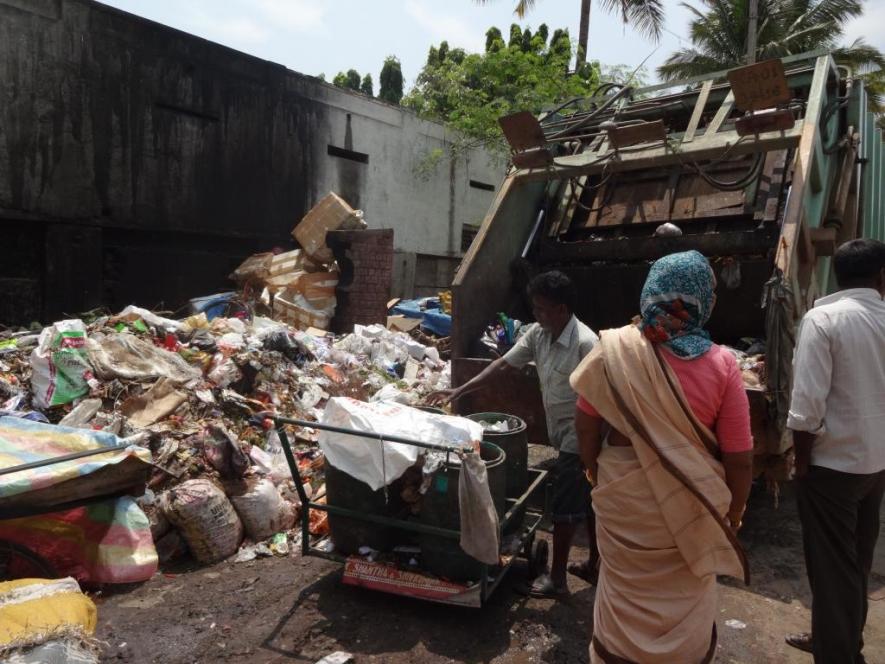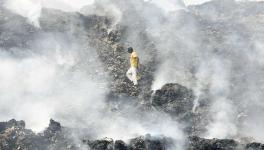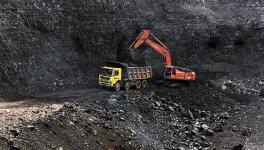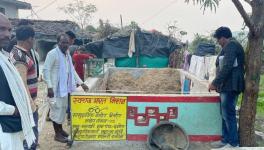Swachh Survekshan Has Major Loopholes, Says CSE Analysis

Image Coutesy: Down To Earth
The Union Ministry of Housing and Urban Affairs (MoHUA) released the Swachh Survekshan 2019 Report at the beginning of the current month. Centre for Science and Environment (CSE) did an independent analysis of the report, and found the survey to be full of loopholes.
The analysis said that a number of anomalies in the way the survey was conducted and its results, threatened the otherwise excellent initiative. In the survey, 75 per cent of the score was dependent on information collected through a third-party certifier, direct observation by a survey agency and citizen feedback. According to CSE, this methodology demands a strict protocol to ensure that the best practices are followed by the agencies during the survey and certification. Unfortunately, the ministry did not keep this in mind during the process.
Swachh Survekshan was started in 2016 by Ministry of Housing and Urban Affairs (MoHUA) to rank and recognise the performance of cities on sanitation and solid waste manage. The idea was that a ranking system would instil a sense of competitiveness among the cities and in turn improve the waste management practices across the country.
The Swachh Survekshan 2019 website proudly proclaims that the survey was completed within 28 days. CSE said that this is one of the major issues with the survey. According to the analysis, “Firstly, Swachh Survekshan 2019 on-ground assessment was completed in a mere 28 days to ensure that the results were declared before the announcement of the election dates. The survey did not use adequate numbers of expert and qualified surveyors and certifiers to visit cities for data collection and observation – in fact, many state urban departments and city administrations have raised their concerns about the incompetence of the surveyors.”
The analysis said that the surveyors did not visit all the cities that they claimed to have assessed. It read, “For instance, site visits were made in only in six-seven of the 26 cities that were rated in Bihar. The remaining cities were asked to share documents and pictures on the online portal.”
According to Swati Singh Sambyal, programme manager, solid waste management, CSE, the poor quality of the survey and third-party assessment is clearly reflected in the overall results and rankings.
While releasing the report, MoHUA claimed that the country-wide segregation of waste at source has increased to 60 per cent and waste processing has gone up to 52 per cent, compared to a low 18 per cent at the start of the Swachh Bharat Mission. However, CSE said that both of these claims were over-exaggerated.
According to CSE researchers, the segregation levels have reached only about 40 percent and the waste management is not more than 30 percent. They said, “In the top 50 cities, only Indore, Mysuru and Ambikapur have segregation levels of over 80 per cent. Tirupati, Ahmedabad, Kolhapur, Bhopal, Singrauli, Durg, Greater Hyderabad, Tiruchirapalli and Greater Mumbai have segregation levels between 40-59 per cent. Other top-ranked cities like the New Delhi Municipal Council, GVMC Visakhapatnam, Chandrapur_M, Ambernath, Wardha, Vasai Vihar, Pune and Latur have segregation levels between 20-39 per cent only.”
‘The source segregation campaign has been reduced to mere distribution of green and blue bins in many cities, but it is not enough to inculcate behaviour change. It requires constant follow up and propagation, which has not happened in a majority of the cities,” said Sambyal.
The analysis said that sustainable waste processing has been missing from most of the top-rated cities. Ujjain, ranked fourth, dumps the bulk of its waste at the Gondiya trenching ground, where a major fire incident occurred recently. Ahmedabad, which secured the sixth spot, dumps its waste at the highly contested Pirana landfill site. Ghaziabad (ranked 13th) has only recently started composting and still dumps over 80 per cent of its waste.
In contrast, many cities in Kerala, Tamil Nadu, Goa, Sikkim and Bihar are doing commendable work on sustainable waste management – they were relegated to the bottom of the ranking. Alappuzha, Thiruvananthapuram and Panaji, which have invested in decentralised waste- processing approaches, were ranked below 300.
The analysis also noted that nearly half of India’s incineration-based waste-to-energy (WTE) plants are defunct or are working below capacity. None of the WTE plants comply with the Solid Waste Management Rules, 2016 which say that only segregated non-recyclable high-calorific fractions be sent to these plants. In spite of this, in majority of the top 50 cities, such plants are being promoted ― WTE plants are operational in NDMC and Jabalpur.
CSE made several recommendations to implement Swachh Survekshan in a better manner. The analysis said, “Many cities that work year-round towards household-level segregation and decentralised recycling and reuse of waste were given poor rankings. This cannot be the way to incentivise and recognise cities for waste management.”
They said that there is need for major reform in the way Swachh Survekshan is done. Deputy Director General, CSE, Chandra Bhushan said, “Swachh Survekshan has to follow the criteria established under the SWM Rules, 2016 that emphasise on segregation, have penalties for non-segregation and littering and user-fee collection.”
Get the latest reports & analysis with people's perspective on Protests, movements & deep analytical videos, discussions of the current affairs in your Telegram app. Subscribe to NewsClick's Telegram channel & get Real-Time updates on stories, as they get published on our website.
























